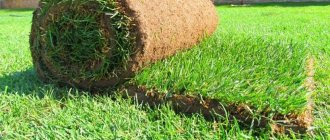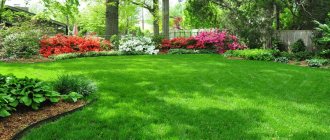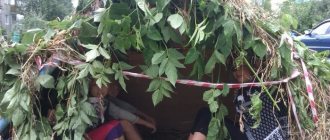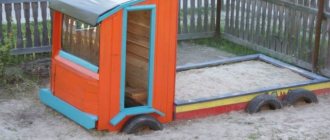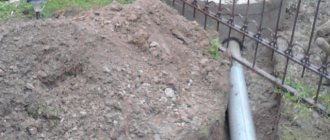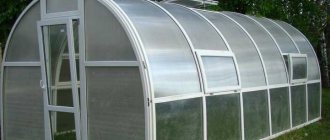What is an aerator
From the name it is clear that this is a kind of instrument for saturating with air. Of course, soil, if we are talking about lawns. Its task is to pierce the compacted turf, loosening it a little, allowing air to penetrate to the roots. According to the piercing method, two types of aerators are known:
- Using a thin tube to a given depth vertically and extracting the core. This is the highest quality method. The soil around the hole is not compacted, the effect is longer. The disadvantage is that these machines are very expensive, and manual ones of a similar design are now practically not produced.
- With a sharp thin pin. Disadvantage: The soil around the hole becomes compacted. The effect can be reduced by increasing the quantity while decreasing the diameter of the pins. In addition, moving the rod up and down at different angles virtually eliminates compaction by loosening the soil around the holes.
Mechanical aerators
Aerating a lawn with mechanical aerators is a very labor-intensive task, so they are used only in small areas. The simplest tools for this are ordinary forks for piercing turf to a depth of 15 cm, or a rake with thin sickle-shaped steel teeth. They can pierce the soil to a very shallow depth, or make an incision, removing a layer of compacted grass and moss. A more advanced version is the drum aerator. When it is rolled over the lawn, sharp pins, evenly spaced on the surface of the cylindrical drum, leave punctures in the turf.
The foot-operated mechanical tubular lawn aerator deserves special attention. It consists of a frame to which 3-4 tubes with an internal diameter of 10-15 mm are welded. When you press on it with your foot, the tubes are pressed in, filling with turf. The next time you press in a different place, the next portion of the turf is pressed in, and the core from the previous puncture is thrown out through the upper hole. However, due to their high labor intensity, foot aerators are not very common.
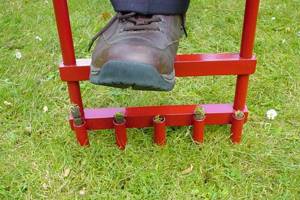
Much more popular are sandals for lawn aeration with sharp pins on the sole. They are worn over shoes or boots, and the desired effect is achieved by “walking” in such “shoes” across the lawn, trying to make punctures evenly over its entire area.
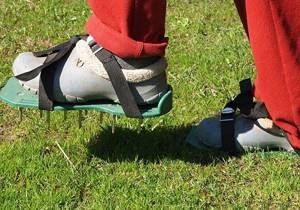
Main events
The next important step is scarification of the lawn (combing with a rake). In the spring, it is imperative to remove the remains of dry grass, dead stems and leaves, and moss formed over the winter, that is, comb out the lawn felt. This procedure will prevent the occurrence of fungal diseases and improve access of air, water and fertilizers to the soil.
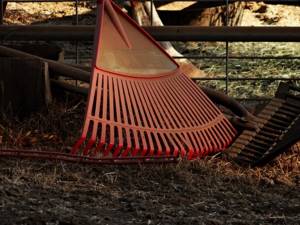
As we have already noted, scarification is carried out when the soil dries well enough after the snow or rain melts. To perform this procedure, use fan and twisted rakes (regular rakes will damage the lawn) or a special scarifier.
First, carefully rake out all the lawn felt with a twisted rake, and then “comb” the young grass with a fan, collecting what remains. To do everything efficiently, you should rake the entire lawn, first along and then across. The remaining small debris is collected with a garden vacuum cleaner or manually.
Very often, concepts such as scarification and verticulation are perceived as synonyms, however, although these procedures are similar, they also have significant differences.
Verticulation (ferticling) is the vertical cutting of the turf layer of the lawn (turf). This procedure is carried out using a special device - a verticutter, equipped with vertical knives installed at intervals of 2-3 cm. Along with the turf, the lawn felt is cut through with the knives, and this makes it easier to remove and allows air to access the soil (it becomes looser). And cutting the roots stimulates the appearance of young shoots, which ensures a dense and lush lawn.
Like scarification, verticulation is carried out in the spring, after the soil has dried out and warmed up to about 10 degrees. When persistent heat sets in (in May), this procedure is no longer recommended.
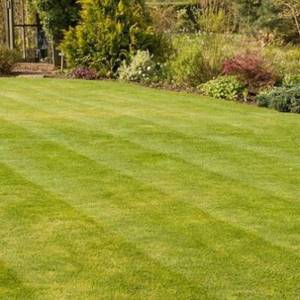
It should be noted that the verticulation procedure cannot be carried out on young lawns, since weakly rooted grass is removed from the soil in some places. It is recommended to carry out verticulation on lawns from 3 years old.
After scarification and verticulation of the lawn have been successfully carried out, the third stage should begin - aeration.
aeration is a health procedure that should definitely be carried out every spring. After wintering, the soil becomes compacted and carbon dioxide accumulates in the turf, which slows down the growth of grass and can even lead to the death of the lawn. After all, everyone needs to breathe, including the roots. To give oxygen access to the soil, punctures should be made in the soil with a depth of 8 cm or more at intervals of 15-20 cm. Aeration of a small lawn is carried out using garden forks with regular or hollow teeth, as well as special shoe attachments with spikes . This process is very labor-intensive, but it is necessary to carry out aeration in places with clay soil, highly compacted ones and where water accumulates (puddles form). If the lawn is very large or in disrepair, then you will need a special lawn aerator.
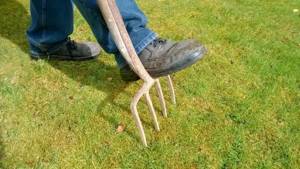
When aeration of the lawn is completed, coarse sand should be evenly distributed over the entire treated area, which will fill the holes formed in the soil and improve its air permeability. To distribute the sand more evenly, you can use a seed or fertilizer seeder.
Lawn aeration is carried out in spring or autumn, it depends on the type of grass sown and climatic conditions. And lawns located on clay soils should be aerated more often, if necessary. Also, additional aeration is required in severe drought.
In the spring, after cleaning the lawn, you can also mulch it. This will help smooth out minor unevenness and improve soil fertility and, accordingly, root nutrition. They lead him through the still ungrown grass. To do this, prepare a mixture of soil, sand and humus, distribute it evenly over the lawn, then use a fan rake or hard broom to level it well, being careful not to cover the growing grass.
Electric and gasoline aerators
Some of these models are sometimes purchased for lawn care on private country estates. Structurally, they repeat the principle of a mechanical drum, but have incomparably higher productivity. There are aerators powered by electricity - their advantages are obvious: environmental friendliness, low noise level and quite high power. The disadvantage is also known - the range is limited by the length of the cable to the power source. Rechargeable models are more autonomous, but require constant battery charging.
The most powerful of these cars are gasoline. Their disadvantages are also known - problems with fuel and a lot of noise. Specialized aerators of this type have significant productivity, so they are often used in agriculture or when servicing large areas. On country lawns, such units, which look like tractors, are used extremely rarely. For small areas, more universal machines that combine several functions are generally used.
Verticutters and scarifiers
What it is? In simple terms, it’s a rake on wheels. The word comes from the English vertical cutter - vertical cutter. Slightly curved thin steel teeth cut into the soil as they move, tearing out dried plants, dead roots, mown grass and other debris from the turf. A lawn verticutter, electric, battery-powered or gasoline-powered, is the same as a rake on a rotating drum. The height of its rise determines whether it will work as an aerator or verticutter. Therefore, these machines are often called verticutter-aerator. Their cutting height is usually adjustable from 0 to 14 cm.
The scarifier works a little differently. For a lawn, this is an analogue of a comb, combing out old leaves, grass clippings and other debris caked on the soil. Its manual counterpart is a fan rake. Electric or gasoline scarifiers are equipped with a drum with wire tendrils on its surface. But for lawn care, it is advisable to have a universal tool. For example, a combination device with replaceable drums that can perform any function.
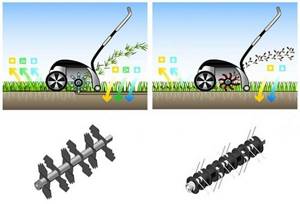
What is the difference between a verticutter and a scarifier?
Electric or gasoline vehicles can be self-propelled or non-self-propelled. Of course, the quality of work of models with wheel drive and the ability to regulate the speed of movement is much better due to the uniformity of processing, however, the cost of the product itself is somewhat higher.
When to scarify (scratch) the lawn?
Spring: for light scarification (regularly maintained lawns)
If your lawn has a small amount of moss, light scarification (or combing) can be done as part of a spring restoration procedure. Use a hand scarifier, rake or electric lawn verticutter.
April is generally the optimal time for this as the soil begins to warm up but there is still enough rain to speed up recovery.
Autumn: the best time of year for heavy scarification (neglected lawn)
If your lawn has a thick layer of thatch, a heavy moss infestation, or has suffered from drought in the summer, you will need to scarify or scratch and scratch and scratch quite heavily. In this case, wait until autumn.
Late August (provided it's not too hot) through September is usually a good time to get your lawn in order. This is also a good time to aerate (aerate) your lawn, which can be done after scarification and just before overseeding and fertilizing. But why autumn?
Because when a Gardener scarifies he is essentially cutting into the soil and pulling out thatch and moss, in many places the soil is left OPEN. Remember, if your felt problem is particularly severe, you may lose a lot of your grass.
OPEN soil after a scarifier is an ideal bed for sowing new seeds and fertilizing the grass, in which case the lawn quickly recovers. But if you were doing this treatment in the spring, the exposed soil would also be ideal for weed seeds to germinate. As a result of autumn processing, you solve the problem with moss and thatch, avoiding problems with weeds.
By waiting until fall, you will avoid the aggressive germination of most weeds, and your lawn will recover without being consumed by dandelions and other weeds.
Dry days: best time of day for scarification
Scarification is best done on a dry day, in the second half.
You don't want to work when the grass is wet for several reasons;
- This makes the job even more difficult, as wet straw, moss and grass can completely clog your equipment. It will be a nightmare, you will curse everything cleaning it out later.
- So choose a dry day and wait until midday when the sun dries and the dew on the grass disappears.
Aeration: when and why?
The need for aeration in a particular area is determined by the condition of the rhizomes. To do this, a vertical cut of the turf is made with a shovel, and if the depth of their germination does not exceed 4–5 cm, then aeration is absolutely necessary. Compacted soil, covered with a layer of compacted grass clippings, leaves, and moss, prevents the penetration of water, nutrients and air to the roots, which inhibits plant development. As a result, bald spots and patches of yellowing grass appear as signs that the lawn care is clearly insufficient. Aeration in this case is the easiest method to correct the situation.
How to make a breakthrough correctly
The whole process consists of making multidirectional notches on the lawn surface. The cuts work well if they are applied alternately, as if in a checkerboard pattern: one row is horizontal, the second is vertical. Before work, it is necessary to mow all the grass, leaving 3 cm above the soil level. Then thoroughly pour water over the entire area and comb it with a rake, leaving nothing unnecessary.
You should not use removed layers of soil to lay compost, as it may contain fungal spores, pathogens and insects.
Aeration rules
You can carry out aeration in small areas using sandals for aerating the lawn, a fork, or in larger areas, a gasoline or electric verticutter. A couple of days before starting work, the area needs to be watered to soften the soil. You can, if you're lucky, aerate your lawn the day after it rains, but not so much that it turns the ground into soggy mud.
Aeration of the lawn is done in rows with an overlap of 3–4 cm. If the turf is too dense, you may need another pass at 90° to the previous one. When, after 2-3 days, the clods of earth turned out of the lawns during work dry out, they need to be crumbled with a rake, then watered, and, if necessary, fertilized. If there are bald spots on the lawn, then before raking you should sow the seeds of the desired grass, level everything and water it generously.
Properly carried out aeration transforms the appearance of the lawn. Within a week, it becomes bright green, its growth rate increases, and its resistance to disease increases.
Under no circumstances should you aerate in hot weather, as this can cause irreparable damage to the grass carpet.
When using a pin aerator, the frequency of treatment can be 2–3 weeks; with a verticutter, as a rule, once a year. But when to apply the treatment depends on the type of grass. For cold-resistant ones, for example, fescue and bluegrass, the best time is autumn; if these are heat-loving crops, then in the spring. In cases where the lawn is actively used and heavily trampled, the work may have to be repeated 2 or even 3 times a season. It is also useful in dry summers - it will improve the access of moisture to the roots, and in rainy times it will allow excess moisture to evaporate, protecting them from rotting.
Improving the lawn using sanding
After clearing the ground and improving air exchange, it is necessary to add and evenly distribute the salt-sand mixture. Sand needs medium grain size.
Sanding is applied directly in those places where you plan to sow new grass in the spring.
Grains of sand fall into all the voids and absorb excess water. The effect of which treatment is as follows:
- The soil surface becomes smoother and the grass grows more evenly;
- The roots are healed and strengthened;
- The quality of the turf becomes better, aeration is more effective.
Adding a mixture of salt and sand is simply necessary for heavy and damp soil. Sanding on other soil is not recommended.
Thus, scarification is simply necessary for the normal growth and development of plants. With improved air supply to the soil, the effectiveness of the method increases. Aeration is carried out annually.
Verticulation and scarification: when to do and how often
When verticulating, rapidly rotating thin cutters cut deep into the soil, tearing out old roots, moss and compacted plant debris from the surface. As a rule, it is carried out twice a year: the main one in the spring (with aeration) and the surface one in the fall. In practice, the depth is chosen based on the age of the lawn, as well as the type of vegetation. The operation stimulates branching of the root system and grass growth. For very large processing depths, it is better to use a gasoline verticulator, as it is more powerful. Do not forget that after verticulation the soil condition is ideal for sowing, so it is advisable, if necessary, to stock up on appropriate seeds. Upon completion of work, the lawn must be watered thoroughly.
Scarification is a more gentle procedure than verticulation, so it can be done more often, say, 3-4 times a year. For example, in the spring, after the snow has melted, then in early June, when active grass growth begins, and also in the fall, in the first half of September. But you shouldn’t comb out the entire top layer of dead grass. There should be up to 0.5–1 cm left. With such a thickness, it will not impede the flow of air, but at the same time it will not allow moisture to evaporate too quickly. When scarifying, it is advisable to change the direction each time, say, 90°. After the procedure, you can lightly fertilize the lawn, add a little lime, and, if necessary, sow fresh seeds in the bald spots. If you have rod or tubular aerators, it is advisable to also aerate immediately after scarification, then the lawn should be watered abundantly.
Why is scarification needed?
What is scarification? This is the name for cleaning the grass surface, which should be carried out at least once every two years. Over time, the grass cover grows so tightly that access to the root system of water and sunlight is impaired. Dying dry stems form a kind of cap, which also complicates the ventilation of the roots and reduces the influx of light. To avoid these problems, it is necessary to regularly loosen the soil, break up solid turf, remove rotten roots and stems of plants, debris, and moss. Scarification can also involve cutting the soil to a specified depth (usually a few centimeters) to improve air and moisture access to the grass roots.

Lawn scarification
Timely scarification of the lawn ensures:
- good ventilation of the root system;
- complete saturation with moisture;
- protection from pests and putrefactive microorganisms;
- ensuring an elegant, well-groomed appearance;
- after high-quality processing and overseeding, new shoots appear on bald spots.
The need for scarification is determined by the length of the roots: if it is less than 5 cm, the area must be treated.
About choosing a verticutter
This is the most popular type of machine, and although, due to its versatility, they do not perform all operations perfectly, nevertheless, it is quite enough to get fairly decent results. So, what should you pay attention to when choosing this device?
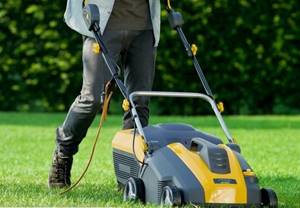
- The body should not be heavy, but durable, so as to cause less damage to the lawn. Good plastic or aluminum will do just fine. Professional samples have a steel body.
- Electric or petrol? When cutting knives deeply into the turf, there is a risk of stopping the motor, which is very dangerous for electric models, but does not at all affect the performance of gasoline models.
- Do you need a garbage disposal that fills up quickly and needs to be emptied very often, which greatly slows down the work. If you choose a verticutter without a garbage collector, you will have to collect garbage with a rake. Sometimes this option turns out to be more acceptable.
- Milling cutters or working cutters must be made of durable tool steel and secured with dampers to prevent the shaft from flying out or jamming.
- The immersion depth of the cutters should be adjusted using an external control knob in the range from 1–2 to 12–14 cm.
- The working width should be selected according to the desired productivity. For different household verticuters, it usually ranges from 20 to 60 cm.
- The handle of the machine must be adjustable to suit the height of the operator.
Rating of verticutters and scarifiers supplied to Russia:
| Brand | Variety | Characteristics |
| Makita UV3600 | electric scarifier, 1.8 kW | grip 36 cm, grass catcher 40 l, weight 15.3 kg, working depth +5, 0, -5, -10 mm |
| MTD OPTIMA 38 VO | gasoline, station wagon, 4-stroke engine, power 4.08 l. With. | 2 shafts, 3 operating modes, grip 38 cm, working depth 0–15 cm, weight 30 kg |
| Oleo-Mac SR 40 R45 | verticutter, gasoline 4.5 l. With. | grip 40 cm, grass catcher 50 l, working depth 5 mm, weight 50 kg |
| Stiga SV 415 E | electric verticutter aerator, 1.5 kW | grip 38 cm, grass catcher 50 l, working depth from +4.5 to -13 cm, weight 14.4 kg |
| Stiga SVP40B | Verticutter aerator, petrol, 4 l. With. | grip 40 cm, grass catcher 50 l, working depth up to 15 cm, weight 37 kg |
| Bosch AVR 1100 | electric scarifier, 1.1 kW | grip 32 cm, depth +5, 0, -5, -10 mm, weight 9.9 kg |
Advantages and disadvantages
Like any other technique, the scarifier has its advantages and disadvantages. Many people don’t know how valuable a lawn scarifier is until they find out what it is and how it helps on the farm. Others do not immediately understand how to use a scarifier without leaving marks on the grass. In any case, regardless of whether you choose a gasoline or electric scarifier, it is important to know about the advantages:
- Maneuverability. The device maneuvers easily and quickly across the lawn, removing excess debris and loosening the soil.
- Power. These are strong and durable units that are capable of processing large areas of land - from 15 acres, if we are talking about gasoline scarifiers.
- Durability. Modern manufacturers produce powerful units that serve owners for 3-7 years, depending on handling and operating conditions.
Additional Information!
It is important to remember that scarifiers wear out faster from water, moisture and cold, so they need to be stored in a dry, warm room.
How to make it yourself
To make an aerator with your own hands, you need a regular piece of pipe. Any weighting part can be installed inside. The procedure for making a lawn aerator:
- Nails no longer than 1.5 cm are welded to the pipe in a chaotic or checkerboard pattern.
- The pipe is installed on the shaft.
- The shaft is mounted on bearings for rotation.
- The bracket is attached to the shaft.
- A handle is attached to the holder.
This aerator is not expensive. It processes the lawn many times faster than forks or rakes. A hand aerator can be used in small areas.
You can create a more complex device. Suitable for large areas. The device moves by wheels, which, in turn, are equipped with a V-belt drive. The device is manufactured as follows:
- The square steel pipe frame is taken from steel pipe.
- A crescent ripper is attached to the frame (a rod, nuts, and spacers are used to secure the frame).
Please note: the sickle is made of sheet metal, 16*16 mm squares are cut in the middle.
Two brackets are made to hold the drive in place. The drive roller bearing is installed on one side, and the second double insulated electric drill is installed on the other side. The power of the electric drill must be at least 500 W. The electric drill transmits the movement to the ripper axis, the movement is carried out by V-belts.
The following video shows how to ventilate a lawn using the device:
Page 2
A beautiful emerald lawn, whether next to an ornamental pond, a recreation area or a volleyball court, almost always becomes the center of the landscape...."
Page 3
Gardeners often face the problem of preserving Georgians in winter. And if there is no basement, where are flower rhizomes usually stored until spring? You must keep everything...
.
Bamboo, a houseplant, is becoming more and more popular among floristry enthusiasts. Learn how to care for exotic plants and where to grow them in…………………………………………………………………………………………………………………… …………………………………………………….
Page 4
In the central zone of Russia there are many different flowers and herbs, some of which are dangerous for animals and people. Also in gardens and vegetable gardens...
Where in the summer there are no hikes after berries and walks in the forest, where you want to choose a fragrant bouquet. But remember that you can’t trust everything...
Page 5
One of the new directions is the construction of a holiday home in a country house - a building in which you can comfortably spend time in privacy and solitude, or even in peace……
Cannes is a popular perennial garden that graces many of the country's flower beds. This is a plant from the tropics, so it is very picky about air temperature.
Page 6
Bright climatis fascinates gardeners in all regions of Russia with its beauty. They are not even afraid of an unpleasant smell, which is why the flower is called the second......
Known in Ancient Greece, the lily became a symbol of purity and tenderness. In addition, the fact is that previously plants were grown only in white. The French kings increased….
Page 7
One of them is a decorative mill that fits harmoniously into any landscape and turns into.....
Sansevieria hanni is a slow-growing horsetail species. She, like her ancestor, does not require maintenance, so that any novice florist can….
Page 8
Stephanotis is an evergreen vine that can reach 5 meters in length. The middle name is Madagascar jasmine. It blooms beautifully and has a thin….
Fittonia, if well cared for and not regretted, can protect itself from negative energy and cause problems. When it starts to dry out with proper care…………………………………………………………………………………………………………… ……………………………………………………………………………………….
Page 9
All children love to build snowmen. And many adults will not be able to protect themselves during this winter fun. And in order to build funny, funny and unusual snowmen, a country house is - ………………………………………………………………………………………… ………………………………………………………
The comfort of a home is unthinkable without the presence of greenery. It not only decorates the room - often useful plants for the home improve the microclimate of the family, are …………………………………………………………………………………………………………… …………………………………………………………..
Page 10
It’s not for nothing that compared to a woman, Azalea is also capricious and beautiful. Because this flower requires special conditions of confinement, and it is located far from the room. Without knowing all this...
The perennial bulbous plant Hippeastrum captivates with its beauty and size, just look at the photo in the catalog or in the video. Grow at home.....
Page 11
Alstroemeria flowers, photographs of which are presented below, are more often found in flower shops than in gardens or flower beds. Cultivated flowers are amazing……
The possibility of using ornamental grasses for the garden, photographs and names are necessary for the gardener when designing borders, flower beds, climbing, etc. Tips may be useful for….
Page 12
English David Austin roses (photo catalog of varieties is presented below) are a relatively new type of roses, which, according to modern classification, is based on...
If you have violets on your windowsill, you've always wondered why they don't bloom at home. Reasons for the absence of inflorescences and…..
Page 13
The variety of colors that cultivars of this perennial herbaceous, ephemeroid tuberous plant can come in is simply amazing. The tulip is called... called.
Since ancient times, blackberries (baccata baccata) have been valued for their medicinal and decorative properties. The wooden bush has an amazing carelessness when planting and.....
Page 14
Ficus Benjamin is becoming increasingly popular among lovers of ornamental plants. Like a small tree in a house, it can grow to a height of ………………………………………………………………………………………………………………… …………………………………………….
Chrysanthemums are bright shrubs of various colors that decorate the garden from summer to early winter. They are used in landscape design and are.....
Page 15
Most flowers bloom only when the heat sets in in late spring or summer, but this rule doesn't apply to everyone. It’s not for nothing that primroses are called primroses: They….
Bergenia (Saxifrage, Bergenia) is a herbaceous perennial flowering plant from the stonecrop family. The plant was named after a German plant.....
Page 16
Lobelia (translated from Latin) is one of the most unusual flowers in the world. The plant has a peculiar and unique color, but most importantly…………………………………………………………………………………………………………… ………………………………………………………………………………….
This plant has many names, it is called "rabbit grass" or sedum. Eyeball is a plant used for ornamental purposes.
Page 17
Today it is difficult to surprise anyone with the wide variety of flowers in the country and gardens, but even among them you will find more or less popular gardeners…….
Nature has been improving this magnificent flower for over 30 million years. Human experience is much less, just over five thousand. People have experienced this in...
Page 18
After summer, the garden can still be decorated with lush vegetation. Some of them are kept on the territory until frost sets in. Therefore, with….
The name “Wolfsbier” is known to many, but few people know that a wide variety of plants can be hidden under this name. Basically, we are talking about a tree - a flower.....
Page 19
Silver salmon is not yet a common plant in central Russia. But given its decorative value and beneficial properties of fruits and leaves, of course, coho salmon is not.....
Everyone knows the nutty almond: Its pleasant sweet taste and smell can be found in the kitchen and in cosmetics. At least almond bushes can be found in the garden.
Page 20
Shooting () is one of the most popular ornamental plants. It is also known as the Bird of Eden. Arrow flowers are not only…..
Adonis belongs to the buttercup family. There are about 45 plant species here. In the wild nature of Siberia, adonites grow, from which modern garden plants are bred. That's why…
Page 21
Liquid is a favorite of many berries. In the garden he is the first one to keep up with him. And how many useful properties it has! Honeysuckle fruits are used as fresh fruits, ……………………………………………………………………………………………………………………… ………………………………………………………………
Gardeners often use various types of ornamental honeysuckle for landscaping. There are also varieties of sweet honeysuckle that can be used not only …………………….
Page 22
Not so long ago, no one could have thought that the berry picking season could open in our rural latitudes at the end of May. Cold resistant liquid......
The liquid is not used for plants that need frequent replanting. Even without changing the location, it will produce a good harvest for many decades. Sometimes, however...
Page 23
Timely cutting down of honeysuckle is as important as caring for fruit trees. This is a simple plant, like currants. But it’s important to remember…..
At home they grow garden hydrangea. This is a perennial, beautiful, flowering shrub. Irrigation, soil moisture and acidity (pH 4.0-5.2) are preferable. For the love of water.....
Page 24
In the literature you will find the name Hydrangia petiolaris - it is translated from Latin, and there is also Hydrangea chereshkovoj (curly).
The article will focus on beautiful species of hydrangea plant trees. Let's take a closer look at issues such as the optimal place before planting, stages of planting, etc.....
Page 25
Petunias have long attracted gardeners with their flowers and variety of colors. Different varieties and hybrids of flowers allow you to create unique compositions. And ease of use.....
To get these beauties out of the seed, you have to try. Bright and colorful flowers delight the eye and bloom in flower beds and front gardens, from the center…………………………………………………………………………………………………………………… …………………………………………….
Benefits of lawn scarification
A lawn scarifier is a very useful gardening tool that benefits your lawn. With its help, several goals are achieved:
The demand for garden equipment is rapidly increasing, and therefore the supply is also increasing. Manufacturers offer us tools of different sizes, shapes and prices. Scarifiers also differ from each other:
- Mechanical. They are also called manual. A manual ripper looks like a cart with wheels, during which the shaft with spokes begins to rotate. These spokes make small cuts in the ground. The speed of processing the area will depend on the width of the shaft. A mechanical scarifier is much cheaper than a ripper that has a built-in motor. But in terms of time and effort, he completely loses. It is wise to use a mechanical ripper on a lawn of no more than 2 acres - it works silently, is lightweight and will save you money (on gasoline or electricity) in a small area.
- Electrical. It looks like a simple lawn mower. Disadvantages: connection to the network, weak engine power, shallow penetration into the ground (compared to a gasoline ripper). This is the same shaft with spokes, teeth or knives, but it is powered by a motor. Will cope with very unkempt grass. The grass that is combed out during loosening remains on the surface and just needs to be raked. The price of such models starts from 10 thousand rubles. A scarifier with a grass catcher and aeration function will be more expensive - from 12 thousand rubles. To avoid dragging a wire all over your lawn, take a closer look at battery-powered models. Such models are mobile, but are more expensive and have limited operating time.
- Gasoline. The gasoline scarifier is a real workhorse. Productive and powerful unit. The knives penetrate deep into the soil and cultivate areas of more than 15 acres. At the same time, there are disadvantages: the cost starts from 25 thousand rubles.

To make the right choice, pay attention to some features
- Your choice should be influenced by the size of the lawn area. And also the type of soil on it. For a clayey area, where feeding the root system itself is difficult, you need a high-power ripper (at least 1100W).
- If your budget is not limited, then opt for models with the maximum number of functions: adjustable depth in the ground, an aerator plus a grass catcher.
- Shaft width - the wider the working shaft, the more area you will process in one pass.
- Case material. It can be plastic - light and rust-resistant, but at the same time quite fragile. Or metal - durable, but heavy and susceptible to corrosion.
- If lawn care is a challenge for you (physically, not financially), then consider hiring a grounds maintenance professional.
- If buying a scarifier is beyond your means, today there is a service for renting garden equipment.
- Consider the characteristics of the soil. If it is rocky, then electric or gas scarifiers may break if a stone gets into the mechanism.
Procedures after loosening
After scarification, it is rational to sand the lawn. Why is this procedure needed? To enrich the topsoil by spreading sand over the area. To do this, take a mixture:
- For humus (heavy) soils: 4 measures of sand + 2 measures of clay + 1 measure of peat substitute;
- For sandy (light) soils: 1 measure of sand + 4 measures of clay + 2 measures of peat substitute;
- For clay soils: 2 measures of sand + 4 measures of clay + 1 measure of peat substitute.
The norm for such a procedure (so that the structure of the soil does not change and the development of plants does not deteriorate) is 1.5 kg of sand mixture per 1 m2 per year.
Sand fills the voids in the holes and absorbs excess water, thus leveling the surface of the lawn area and improving the soil structure.
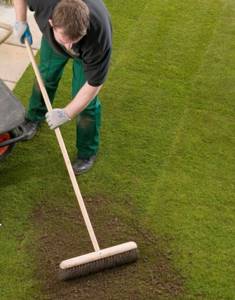
Sanding the lawn
You can also pamper the loosened soil by mulching with cut grass. This results in waste-free production. The haircut that follows after scarification will be very unusual - we will not remove the grass. Crushed in a lawn mower, it will become fertilizer. There are some rules:
- This type of organic fertilizer should not be left on the lawn in dry weather because it will not be processed;
- Right after it rains, this would also be a bad idea;
- Do not mulch if you are cutting grass that is too tall.
We assemble the scarifier ourselves
To create your own gasoline or electric model, which performs 2 types of work to improve air access and clean the turf, you will need certain skills and materials. Let's start assembling:
- First you need a piece of metal tube to make a roller. The diameter should be 10 cm, length no more than 60 cm;
To increase the mass, pour crushed stone or sand inside the segment.
- Next we proceed to attaching nails around the perimeter of the roller. They will make holes in the ground to improve oxygen access. Make the distance no more than 7 mm;
- On both sides of the roller, place plugs on the holes through which the connecting tube is threaded. It will be attached to the handle.
After work, thin out the lawn grass and collect the remaining soil with a regular rake.
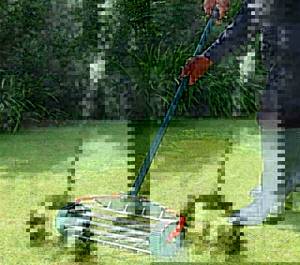
After work, thin out the lawn grass
If you don’t have the time or desire to build the device yourself, you can purchase special shoe pads. Put them on the soles, secure them, and walk across the lawn. Small spikes on such attachments make holes in the ground well, thereby facilitating air circulation in the soil. The price of such a device starts from 500 rubles.



